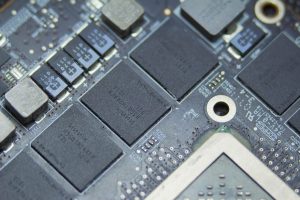Can Google Classroom Detect AI In today’s tech-driven world, AI is infiltrating nearly every aspect of life, including education. With AI tools becoming increasingly sophisticated, the question arises: Can Google Classroom, a widely used platform for managing student assignments and interactions, detect AI-generated content? As you navigate this article, we will explore the complex relationship between AI, Google Classroom, and the detection of AI in academic settings, all while delving into the intricacies of AI’s potential to aid or hinder education.
The Rise of AI in Education
Before diving into detection capabilities, it’s important to first understand the role AI is playing in education. AI-powered tools, like automated essay generators, chatbots, and even advanced research assistants, have made their way into classrooms. AI can generate text, solve complex problems, and even engage in conversation with students, making it both a resource and a challenge for educators.
With such advancements, there’s growing concern about students using AI tools to complete their homework or assignments, which leads to the fundamental question: Can Google Classroom detect when AI has been used?
You also may like to read this: Can You Use AI Art for Book Cover?
Understanding Google Classroom and Its Limitations
Google Classroom, while an excellent tool for managing classroom activities, assignments, and grading, isn’t inherently equipped to detect the use of AI-generated content. Google Classroom is built primarily for facilitating communication between students and teachers, organizing assignments, and tracking progress.
But, when it comes to detecting whether an essay or project was written by a student or generated by an AI model, Google Classroom doesn’t have built-in tools for this specific purpose.
Features of Google Classroom:
- Assignment Organization: Assignments, quizzes, and assessments are all neatly organized in Google Classroom, making it easier for teachers to track submissions.
- Real-Time Feedback: Teachers can provide real-time feedback on assignments, streamlining the grading process.
- Integration with Google Docs & Sheets: Students can use Google Docs for assignments, which allows teachers to comment and assess directly on the document.
However, one key limitation of Google Classroom is that it doesn’t perform any type of AI plagiarism or originality checks. To catch AI-generated content, teachers often rely on third-party tools.
AI Detection Tools and How They Work
AI-generated content can be particularly challenging to detect because modern AI tools are capable of producing text that mimics human writing with high accuracy. This makes it nearly impossible for the naked eye to distinguish between student-written and AI-written content. However, various detection tools have been developed to assist educators and administrators in identifying AI-assisted work. These tools focus on linguistic patterns, consistency, and structure that AI tends to favor.
Some AI detection methods include:
- Text Analysis Tools: These tools analyze sentence structures, vocabulary, and writing style to detect anomalies indicative of AI authorship.
- Plagiarism Detectors: While not specific to AI, tools like Turnitin scan for similarities with existing content, which can sometimes reveal AI-generated work if it’s too similar to a vast database of existing texts.
- AI-Specific Detection Software: These are more advanced tools designed specifically to analyze AI-written text, identifying patterns that align with how AI generates responses.
Popular AI Detection Tools:
| Tool | Feature 1 | Feature 2 | Feature 3 | Feature 4 |
| Turnitin | Plagiarism detection | Database of millions of papers | Can spot AI-assisted text in context | Provides a similarity score |
| GPTZero | Analyzes text for AI patterns | Detects AI’s common stylistic flaws | Works with both short and long texts | Focuses on GPT-generated content |
| CopyLeaks | Detects machine-generated text | Has real-time API integration | Plagiarism checks included | Supports multiple languages |
Can Google Classroom Detect AI?
So, can Google Classroom detect AI? The short answer is no. Google Classroom itself does not include any AI detection features. However, there are potential ways to identify AI content indirectly. For instance, teachers could scrutinize writing styles, inconsistencies, or discrepancies in the student’s work, such as a sudden improvement in writing quality that doesn’t match their usual output.
Advantages of AI Detection in Education
While Google Classroom lacks direct AI detection capabilities, integrating AI detection tools could have numerous advantages for educators:
- Preventing Academic Dishonesty: AI detection tools help ensure that students are submitting original work and aren’t relying on automated content generators.
- Encouraging Critical Thinking: By preventing AI-generated assignments, educators can encourage students to develop their own critical thinking skills and creativity.
- Supporting Fair Grading: Detection tools can help teachers grade fairly, ensuring that all students are evaluated based on their own work.
Pros of AI Detection Tools:
- Enhances academic integrity
- Helps teachers focus on teaching rather than micromanaging assignments
- Promotes a fairer grading system
- Encourages genuine learning
Cons of AI Detection Tools:
- May have false positives (misidentifying human-written work as AI-generated)
- Could increase the reliance on third-party tools, leading to additional costs
- Privacy concerns regarding data usage
- May not be able to detect newer or more sophisticated AI models
Is the Role of AI in Education Always Negative?
AI in education doesn’t necessarily have to be viewed negatively. When used correctly, AI can serve as a valuable tool for students and educators alike. From helping with research to offering personalized learning experiences, AI has the potential to enhance the educational experience. However, the challenge lies in balancing its use to ensure students remain engaged and develop essential skills rather than relying on AI for shortcuts.
Pros of AI in Education:
- Personalizes learning experiences
- Provides instant feedback
- Enhances productivity for both teachers and students
- Can assist in tutoring and homework support
Cons of AI in Education:
- Risk of students over-relying on technology
- Potential for widening educational inequality
- Ethical concerns regarding data privacy
- Could reduce face-to-face interactions, essential for developing communication skills


















